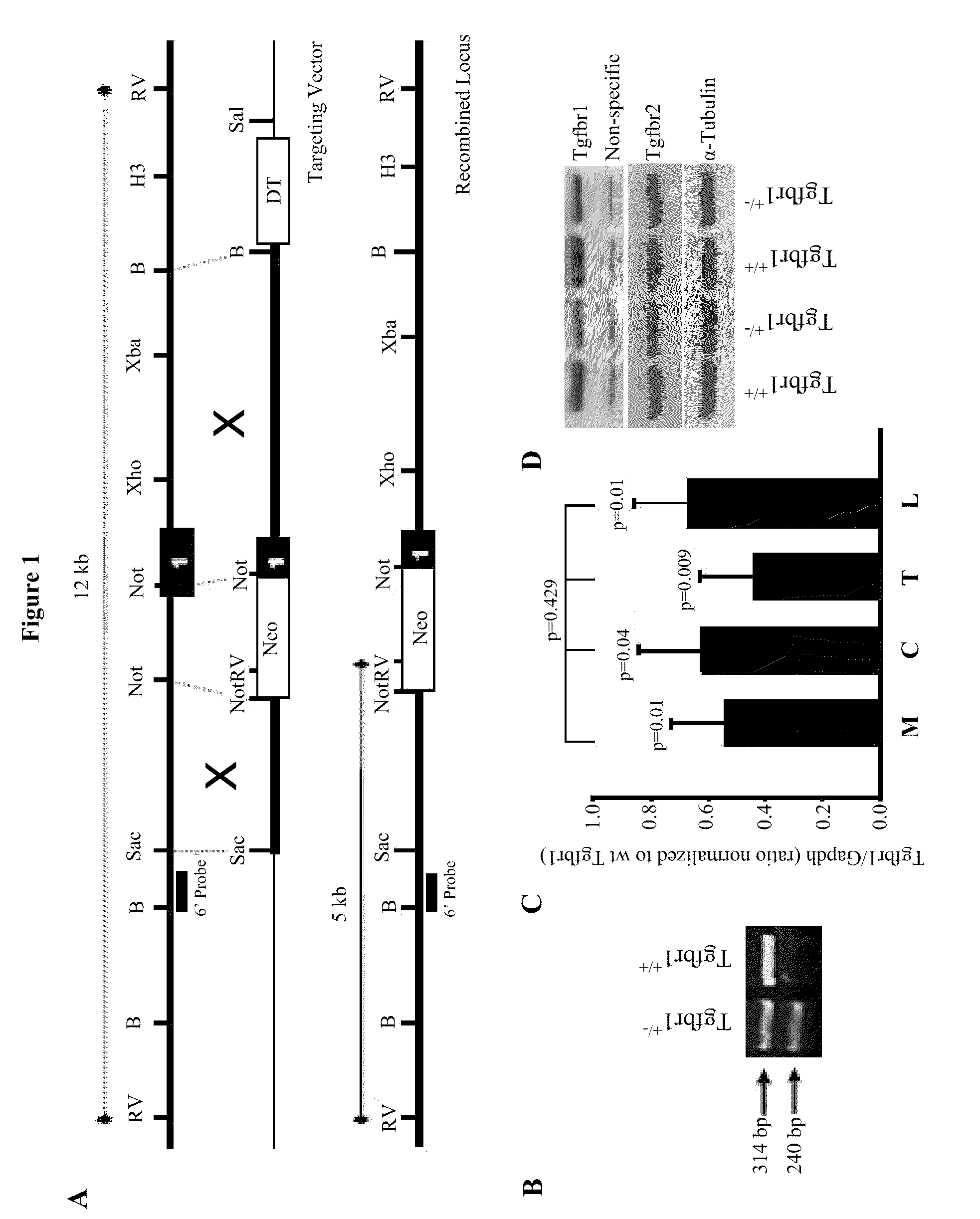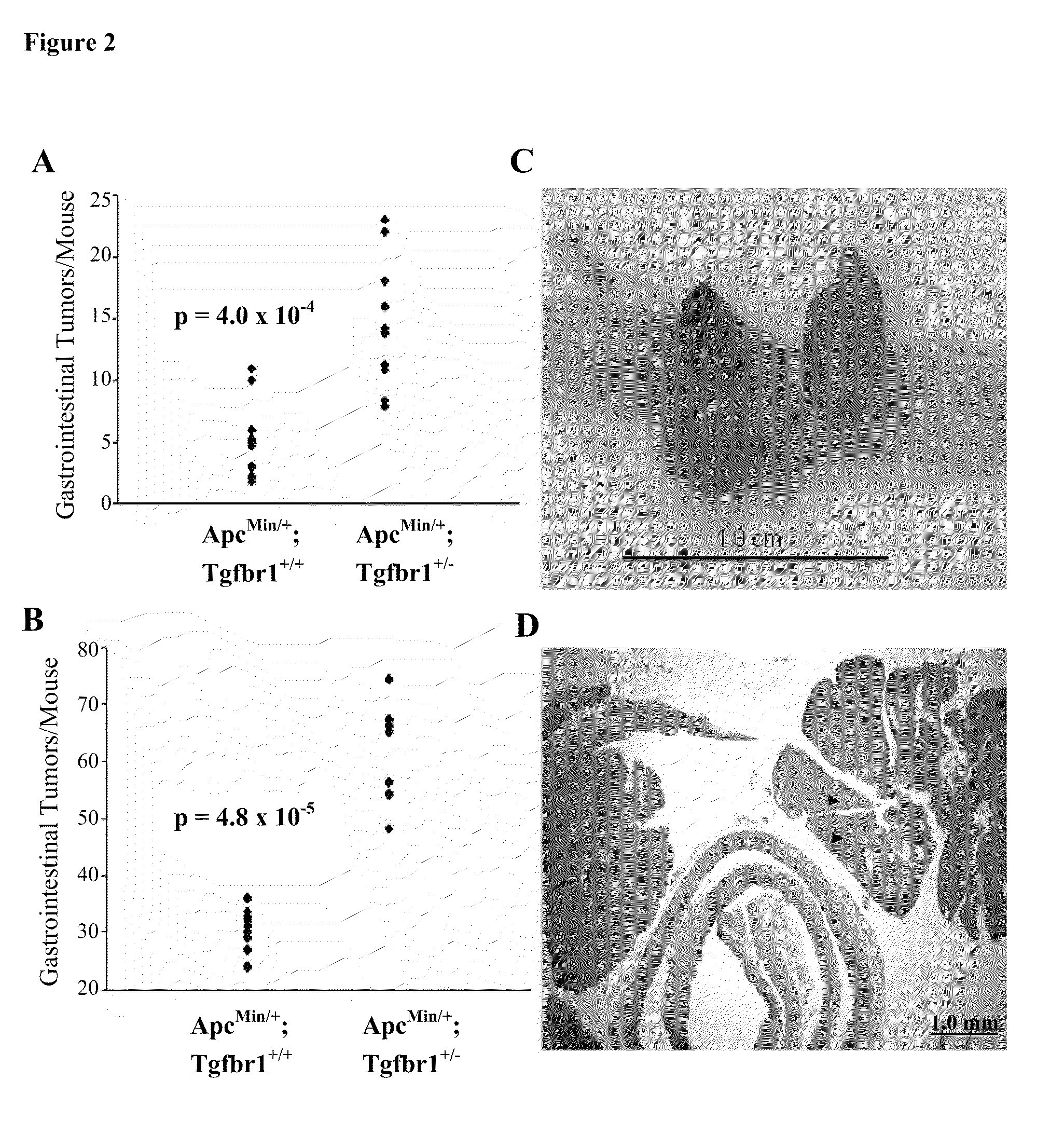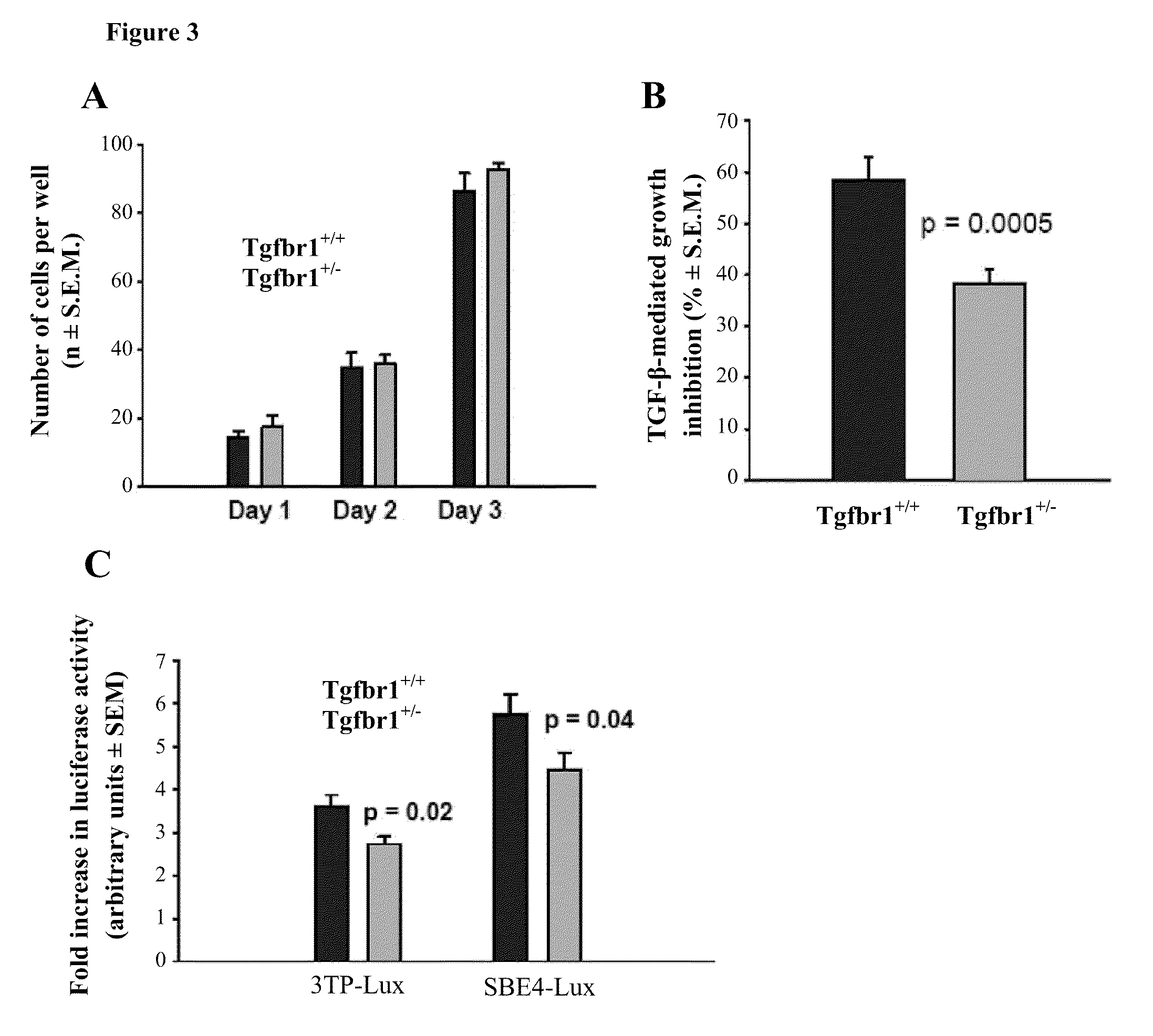Tgfbr1 HAPLOINSUFFICIENCY MODIFIES RISK FOR CANCER
a haploinsufficiency and cancer technology, applied in the field of detection of susceptibility to cancer and methods for treating and/or preventing cancer, can solve the problem of haploinsufficiency as cancer risk factor, and achieve the effect of lowering the risk of colorectal cancer and high expression
- Summary
- Abstract
- Description
- Claims
- Application Information
AI Technical Summary
Benefits of technology
Problems solved by technology
Method used
Image
Examples
example 1
Generation of a Targeted Tgfbr1 Mouse Model
[0079]Using mouse genomic DNA as a template, Tgfbr1 primers were designed amplifying a 491 base pair fragment spanning from position 27 (exon 1) to position 517 (exon 3). Using an isogenic 129SvIm genomic library (Stratagene), several clones were chosen, grown, and the insert was excised through NotI cleavage. Two overlapping clones were obtained that spanned this genomic region. A NotI site 5-bp was found downstream of the ATG start codon. The targeting vector has been designed to insert the Neo cassette into the Not I site, thus interrupting the Tgfbr1 open reading frame and removing 1.1 kb mouse genomic sequence immediately upstream of this Not I site.
[0080]Referring to FIG. 1, generation of a novel Tgfbr1 exon knockout mouse model is seen. In FIG. 1A, a strategy for interrupting the Tgfbr1 open reading frame by insertion of a Neo cassette is seen. A classical targeting vector inserting was generated by inserting a Neomycin resistance ca...
example 2
Generation of a Novel Mouse Model of Targeted Tgfbr1 Inactivation
[0091]A knockout mouse model of TGFBR1 generated by targeted deletion of exon 3 has been previously described. There is growing evidence that the signal sequence of human TGFBR1*6A may have intrinsic biological effects, which are caused by mutations within the exon 1 GCG repeat sequence. While the exon 3 Tgfbr1 knockout model does not result in the generation of functional TGFBR1, the generation of a functionally active signal sequence cannot be excluded. To circumvent this potential problem, a classical knockout vector was designed to insert a Neomycin resistance cassette (Neo) into a Not I site located immediately after the start codon and removing 1.1 kb of mouse genomic sequence immediately upstream of this Not I site (FIG. 1A). This approach precludes the generation of any signal sequence, which is encoded by part of the removed sequence. The Tgfbr1+ / − mice were viable and fertile, and appeared normal in their mor...
example 3
Tgfbr1 Haploinsufficiency Modifies TGF-β-mediated Signaling and Cell Proliferation but does not Alter Hematopoiesis
[0097]Next the effects of Tgfbr1 haploinsufficiency on cell proliferation were studied using mouse embryonic fibroblasts (MEFs) from Tgfbr1+ / + and Tgfbr1+ / − mice. In the absence of TGF-β, the growth of Tgfbr1+ / + and Tgfbr1+ / − MEFs was identical. Referring to FIG. 3, TGF-β-mediated cell proliferation of Tgfbr1+ / + and Tgfbr1+ / − mouse embryonic fibroblasts (MEFs) is seen. FIG. 3A shows spontaneous cell proliferation of Tgfbr1+ / + and Tgfbr1+ / − MEFs. Cell proliferation was assessed daily for three days by counting cells. The experiments were performed three times in triplicates. The data show mean cell count±S.E.M. In the presence of exogenously added TGF-β, the proliferation of Tgfbr1+ / − MEFs decreased by 38.32±3.44% while that of Tgfbr1+ / + MEFs decreased by 58.24±5.74%, p=0.0005. FIG. 3B shows TGF-β-mediated cell proliferation assays. TGF-β-mediated cell proliferation was ...
PUM
| Property | Measurement | Unit |
|---|---|---|
| molecular weight | aaaaa | aaaaa |
| diameter | aaaaa | aaaaa |
| size | aaaaa | aaaaa |
Abstract
Description
Claims
Application Information
 Login to View More
Login to View More - R&D
- Intellectual Property
- Life Sciences
- Materials
- Tech Scout
- Unparalleled Data Quality
- Higher Quality Content
- 60% Fewer Hallucinations
Browse by: Latest US Patents, China's latest patents, Technical Efficacy Thesaurus, Application Domain, Technology Topic, Popular Technical Reports.
© 2025 PatSnap. All rights reserved.Legal|Privacy policy|Modern Slavery Act Transparency Statement|Sitemap|About US| Contact US: help@patsnap.com



